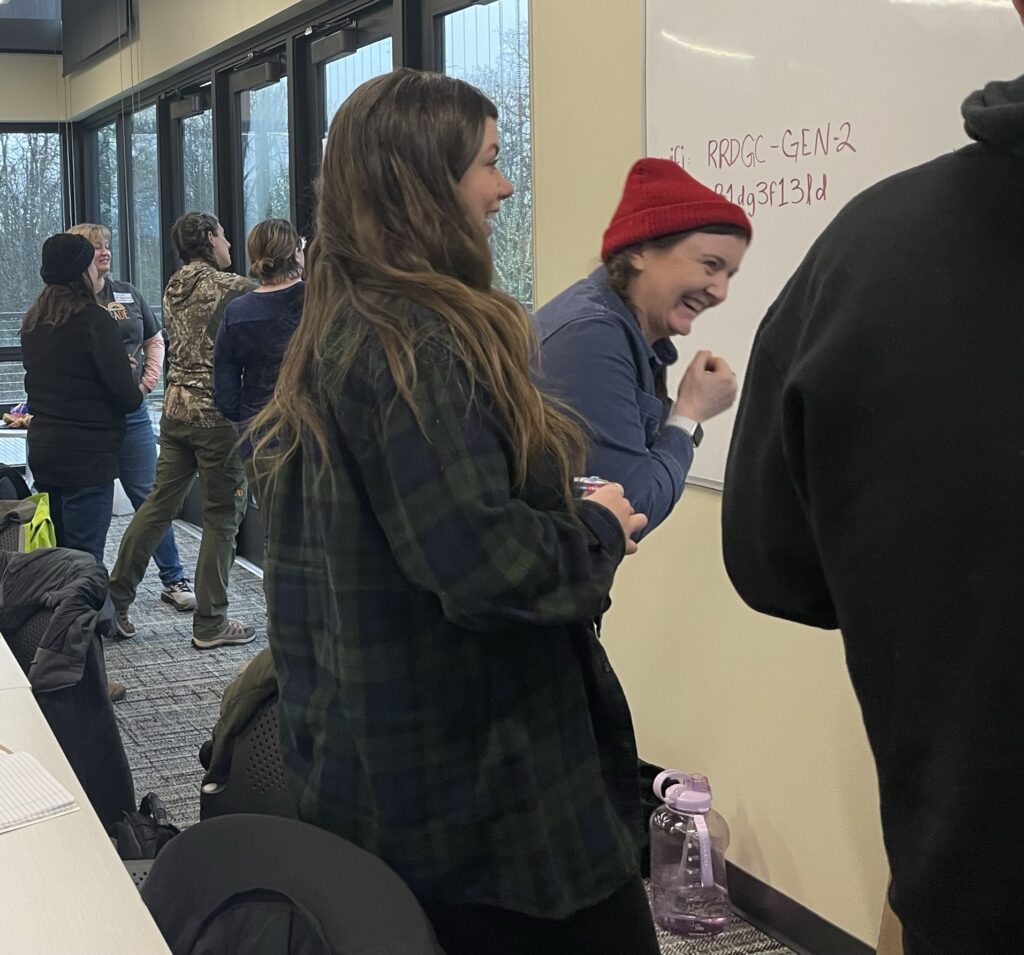The morning of an in-person PEI training for twenty teachers from ESD 112 was cold enough that rain had turned to snow flurries. Knowing that much of the workshop would happen outdoors, Integrated Curriculum Coordinator Pranjali Upadhyay was concerned.
“I was expecting some people wouldn’t show up because of the weather,” she says. “I didn’t want to force anyone to attend.” But regardless of the temperature, every registered teacher arrived, and no one complained about the temperature or snow. One even commented that it would have been great to spend even more time outside.
“This type of collaboration brings the joy back into teaching and gives educators the license to dream big about what learning looks like for their students.”
— Pranjali Upadhyay, Integrated Curriculum Coordinator ESD 112

The ‘Learning Outside: Fostering Environmental Awareness and Increasing Engagement Through Outdoor Education’ workshop was one of a series funded through an Office of the Superintendent of Public Instruction (OSPI) Outdoor Learning Grant. Upadhyay was inspired to connect with PEI after attending a workshop with PEI’s Lower Columbia FieldSTEM Coordinator Emily Newman last summer. She noticed how well teachers were responding to what they were learning.
“I could see a shift in them thinking differently about taking kids outside,” she says. “There’s a lot of anxiety around, ‘It’s going to be wild; it’s going to be a management nightmare.’ But as they were working with Emily, that anxiety and uncertainty were melting away. Instead, I was seeing excitement. They started feeling like they had protocols and activities they could use and thinking of outdoor space as an extension of their classrooms.”
Teacher confidence was also a focus of the ESD 112 workshop; participants discussed barriers to getting students outside and factors in creating a successful outdoor experience. They also experienced activities they could use with students such as ‘sit spots’ and a BioBlitz in which they quickly documented as many living things as possible in a designated area. That was when they discovered an unknown type of fungi growing on a tree.
“Nobody knew what it was,” says Newman. “It was amazing to have all these teachers puzzling over something they’ve never seen before. They were so engaged and at the same time, thinking about how their kids can become engaged.”
Upadhyay agrees. “It was a beautiful moment,” she says. “The teachers got to experience being learners again and feel that curiosity and excitement that sometimes gets lost as we get older.”

Participants graphed their data from the BioBlitz, read part of a children’s book to introduce sit spots, and worked with ‘found’ objects to explore art, math, and English Language Arts (ELA) applications of outdoor learning.
The response has been overwhelmingly positive, according to Upadhyay. “We’ve had comments like ‘This is the best workshop I’ve ever been to in my life,’” she says. “This type of collaboration brings the joy back into teaching and gives educators the license to dream big about what learning looks like for their students.”
Newman recalls one teacher describing an outdoor space at his school that no one was using and thinking of ways he could integrate it into his curriculum. “There was a lot of excitement around taking to administrators and seeing what was possible,” she says. “Other teachers were talking about starting raised beds for gardening and applying for more Outdoor Learning Grants.”
One of ESD 112’s goals is to increase opportunities for students to achieve educational equity, and many participants came from school districts where students are dealing with intergenerational poverty. “It’s not acceptable when some of our students are having rich opportunities to connect with their environment, and some are not,” Upadhyay notes. “We were really intentional about inviting teachers that serve communities highly impacted by poverty and other inequities.”
The workshop had a waiting list, a rare occurrence, and already teachers who weren’t able to attend are requesting further professional learning opportunities with PEI through ESD 112. Upadhyay intends to support educators in applying for Outdoor Learning Grants. “We’re hoping that this collaboration branches out into a lot of our districts applying for funding for outdoor learning,” she says. “We serve thirty districts in the region. We’re hoping this is a community of teachers who are coming together to dream and vision and sustain this work.”
